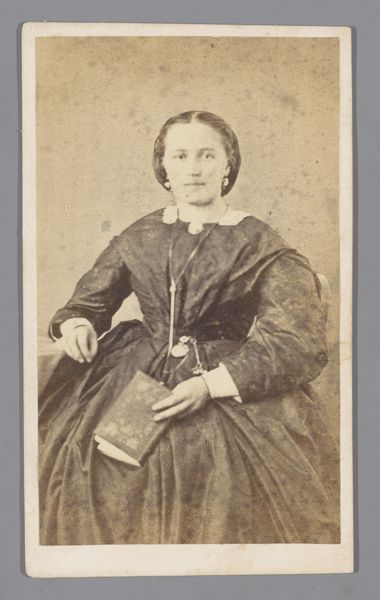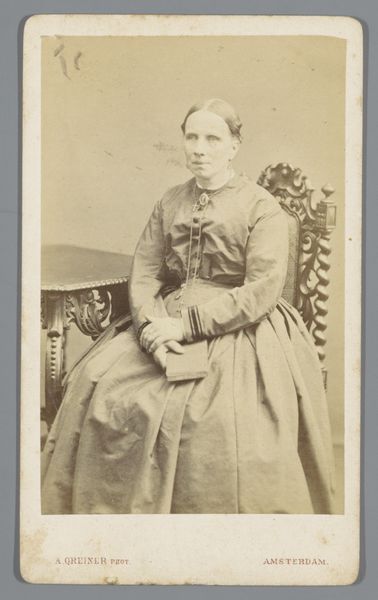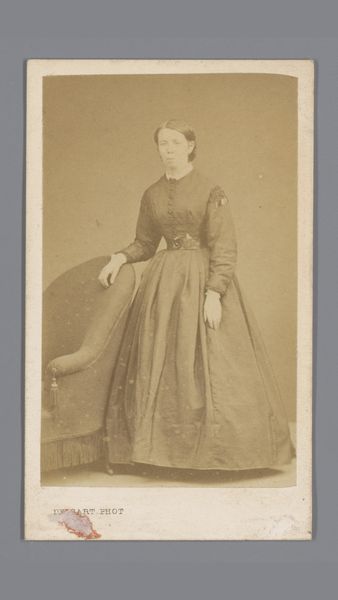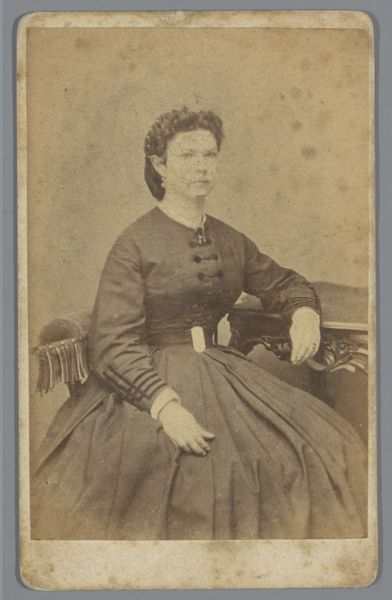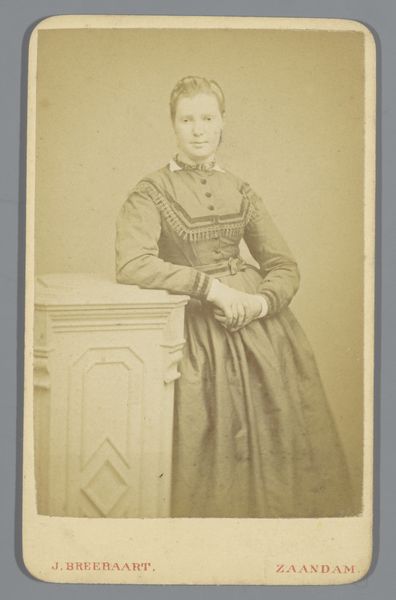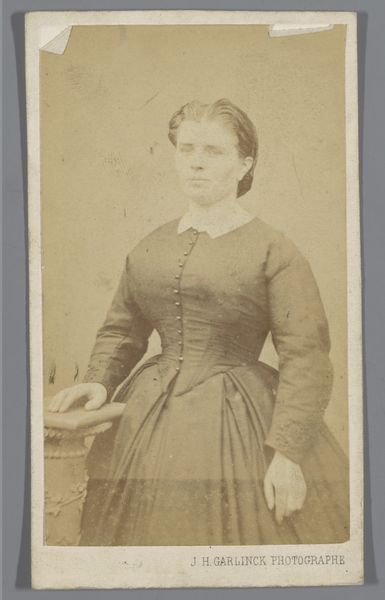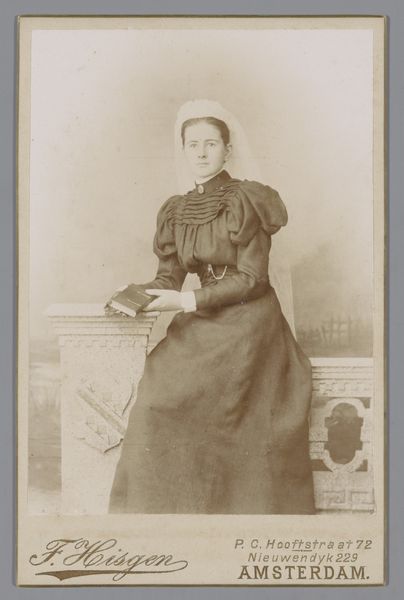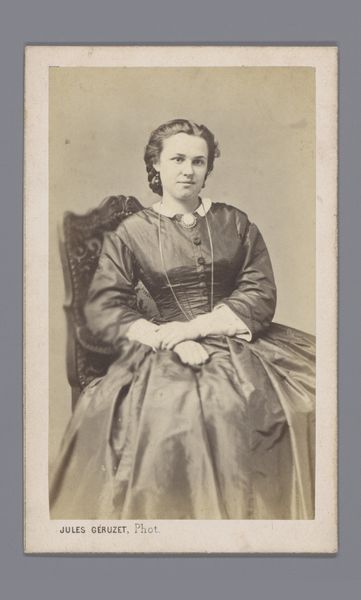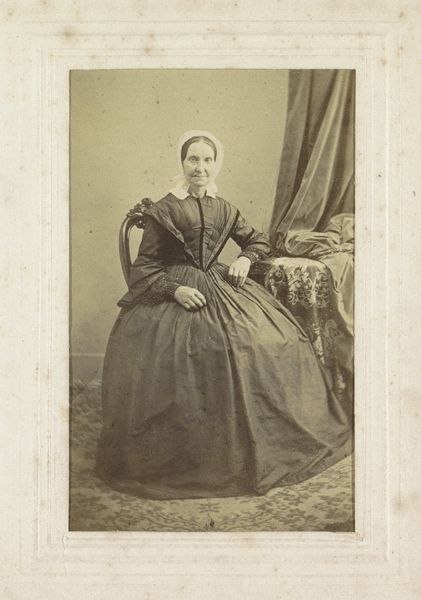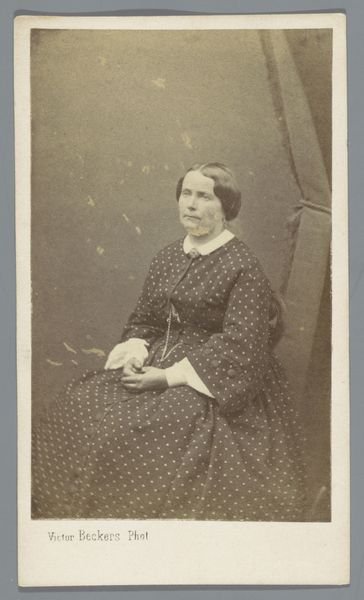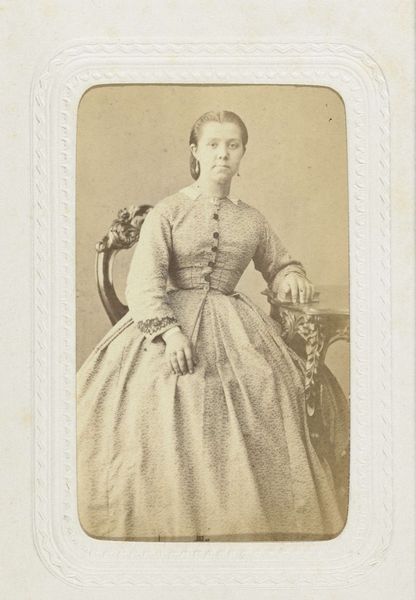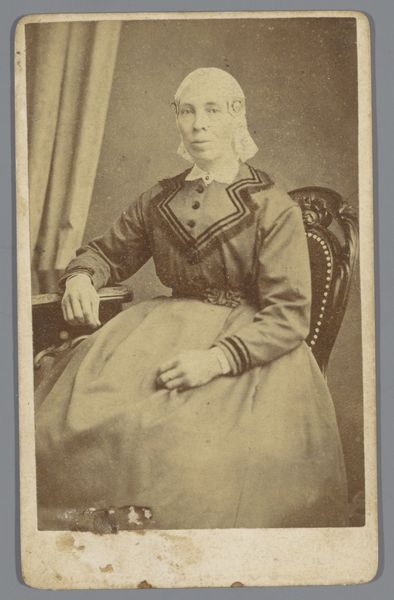
photography, albumen-print
#
portrait
#
16_19th-century
#
vintage
#
archive photography
#
photography
#
historical fashion
#
19th century
#
albumen-print
Dimensions: height 105 mm, width 62 mm
Copyright: Rijks Museum: Open Domain
Editor: Here we have Louis Robert Werner's "Portret van een onbekende vrouw," made sometime between 1878 and 1886. It’s an albumen print. Looking at the muted tones and her simple clothing, I’m curious about the social context surrounding this piece. What do you see here? Curator: This albumen print, produced through a meticulous chemical process, invites a materialist reading. Consider the labor involved: the photographer, the sitter, the technicians preparing the chemicals and printing the image. What social strata afforded the leisure for portraiture? Who was accessing these technologies, and who was excluded? Editor: That’s a good point! I hadn’t thought about it in terms of access and labor. Curator: Note the woman’s dress. Its plainness speaks volumes. Machine-made fabric was becoming more accessible, influencing fashion. The small detail in her ring suggests access to specific consumer goods, though reserved and not extravagant. Editor: So, even her choice of dress is a signifier of production and consumption? Curator: Precisely. Photography democratized portraiture to some extent, but the material conditions surrounding its creation still speak of social hierarchy. Editor: I'm starting to see how everyday objects can speak volumes about social structure! Curator: Absolutely. Examining the means of production and access surrounding even seemingly simple objects like this albumen print can reveal a lot about power structures. Considering materiality broadens the understanding, don’t you think? Editor: It certainly does. Now I am looking at this print with completely fresh eyes. Curator: Likewise, analyzing photographs with you reminds me to continue questioning our assumptions.
Comments
No comments
Be the first to comment and join the conversation on the ultimate creative platform.

